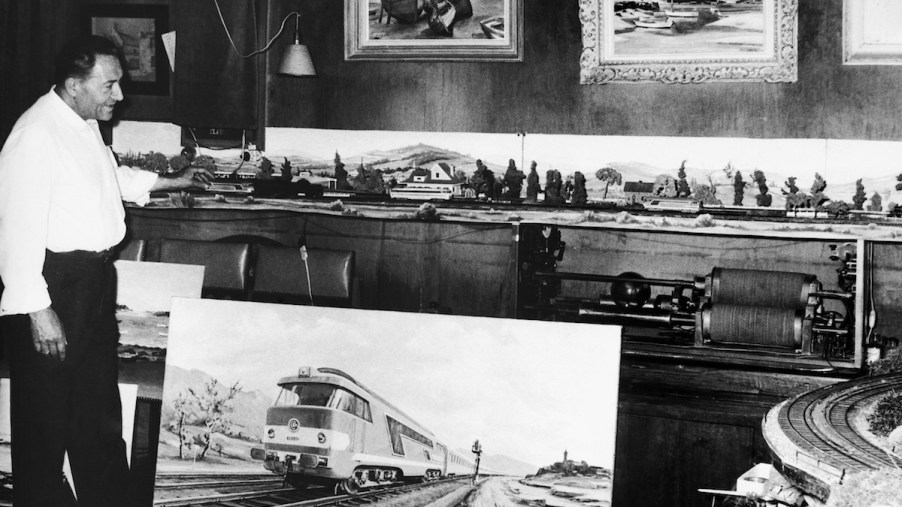
The Electric Egg Had These 3 Unique Features
Back in the 1930s and 1940s, some people, from all walks of life, tried their hand at designing automobiles, which wasn’t easy to do, nor is it today. Instead of using the average vehicle design, a few of these designers took a more creative route.
One such person was a Frenchman named Paul Arzens. He would pave the way for the electric vehicles we have in our modern times. Curbside TV briefly explains who Paul Arzens was and just what the Electric Egg creation, we knew him for, was all about.
Who was Paul Arzens, and what is the Electric Egg?
Paul Arzens, the car’s designer, started as a French painter. But, since he didn’t care for selling the hard work he put into his paintings, he earned money as an industrial designer instead. It was the right move because he would spend the next several years designing some astonishing pieces of equipment. One of the first things he designed was a six-speed automatic transmission, which came very close to being used by Peugeot, a French carmaker. Later on, he created the La Baleine, otherwise known as the Whale. This was his first jaunt into electric cars.
The Oeuf Electrique, or Electric Egg, was his most famous electric vehicle design. He created it in 1942 when gasoline was extremely limited to civilians, as were motor vehicles because of the war as Jalopnik reported. Using electric batteries, he designed an egg-shaped car that was so lightweight; it was a breeze to drive. They reported the total weight of the car to be 350 kg, which is about 771 lbs. The car had three unique features that set it apart from other vehicles of that time-period.
Three-wheel setup
In modern vehicles, you’d find a body frame strategically balanced on top of a four-wheel chassis. But, with the Electric Egg, Paul Arzens used a three-wheel setup instead. The third wheel, set in the rear middle of the vehicle, made it so that not only could the car remain balanced at all times, but it could also maneuver easily in tough spots. Also, the body frame all but covers the back wheel and some of the front ones, which gives it an illusion that it’s floating down the road. Thus, adding to the futuristic appeal to the car.
Bubble Windshield/Doors
The Electric Egg has a windshield, like other cars, but this one looks more like a bubble dome on top. The windshield also connects to the side windows, which double as the doors of the vehicle. They’re made of plexiglass and are prone to breakage, as we see on the prototype with its rudimentary repair of screws and plates holding the pieces together. The plastic-type material is to keep the weight of the vehicle down to a minimum so that the vehicle weight ratio could be more efficient for the batteries. It was genius in his time, but might look a bit strange in our day.
Operated on electric batteries
The design was for a small vehicle setup, which he felt would be a far better creation than the huge Baleine car he originally built. The Baleine was too heavy for the power to weight ratio he had, so he set out to design a much lighter weight car that would be more efficient with the electric batteries. With the aluminum body and plexiglass windows, the vehicle was one of the lightest of its kind. Running it with the electric batteries allowed it to drive for 63 miles at 44 mph, which was pretty good for the time-period. Of course, this design was well ahead of its time, as electric cars wouldn’t show up for over 50 years later.
In the end, the Electric Egg was a genius piece of equipment, but it could never get produced. The body frame worked better with the aluminum material, but that was not readily available in the large quantities needed to produce the car, at that time. The prototype Arzens built remained in his possession, and he designed locomotives instead.


